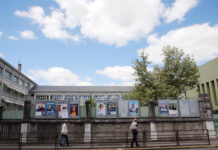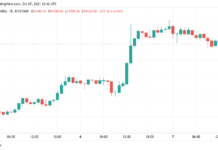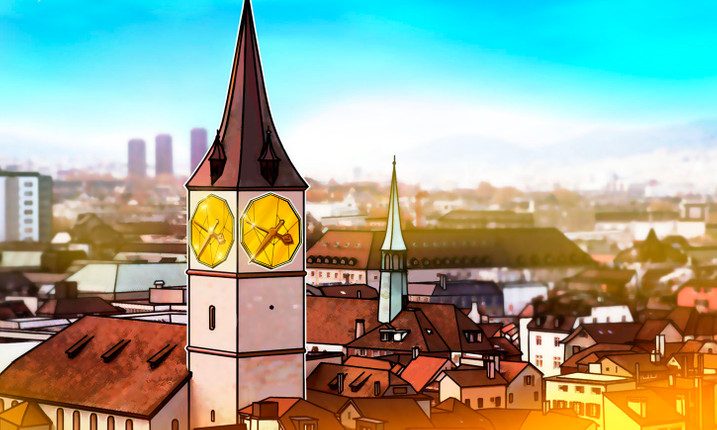Professor of physics at the University of Pisa (Italy), Guido Tonelli participated in the adventure of the discovery of the so-called Higgs boson, at the European Center for Nuclear Research (CERN). He was in fact the spokesperson for the Compact Muon Solenoid (CMS) experiment, one of the two experiments installed alongside the LHC particle accelerator, which discovered, in 2012, the last particle missing from the hunting board.
In Genesis (Dunod, 256 pages, 19.90 euros), the Italian researcher tells in seven stages how life appeared from the initial vacuum to human beings, passing through matter, light, stars, galaxies … To explain some of the most delicate stages of this magnificent story, Guido Tonelli resorts to images and metaphors borrowed from the worlds of art, mythology or religion.
I talk a lot with religious people, and I realized through contact with them, but also by studying history, the importance of having accounts of origins. This knowledge of the sequence of each link is essential for humanity. It makes us stronger. And science provides the most complete and detailed account to explain the appearance of matter, stars, planets, life…
The Universe follows rules that science has gradually discovered. But beware, scientists should not be arrogant about religion. Faith and reason are two different things. Both bring important stories to men by reassuring them.
Yes, it’s true, some parts of the Universe are terrible, chaotic, not reassuring at all. But where we are is rather quiet: the black hole at the heart of our galaxy is far away and not very active. I find that being aware that all of this is possible is reassuring. I appreciate life more by having all this knowledge. But we have not yet sufficiently discussed the moral and philosophical consequences of the new conceptions brought about by modern science.
In the 17th century, the discoveries of Galileo and Newton as well as the experimental method had been a revolution, then influencing our whole culture: we are in a way the products of these ruptures. Then, general relativity and quantum mechanics constituted another upheaval. They not only allow incredible technical progress, they offer a change of point of view, new visions of the world. You can see connections in artists and intellectuals like Freud, Pirandello, Schönberg, Kokoschka.
More recently, the discovery of the Higgs boson has brought yet more changes. We realize thanks to him that the material Universe is fragile, and that this fragility is therefore not unique to man. A small deviation in the initial properties and the ordinary matter of which we are made would not have existed. These implications deserve further discussion.
It’s the contrary ! Creationists don’t like my book. It is true that the clock seems well regulated, and that the mechanics run fantastically well. And so we can think of this creationist hypothesis. But we can also say that if it had been different, we wouldn’t be here to talk about it and discuss each step. Creationists resist the idea that the laws of chance dominate this story, made up of positive and negative hazards.
The seven days that divide the book correspond to seven upheavals that create new balances. Each time, a detail made the difference. I like to joke that it can even be demonstrated that there can be no intelligent design behind these creations. There may very well be an outside intelligence, but then the question is what use would it be? Indeed, if it intervenes in the functioning of the Universe, then a physicist will see it immediately, because that would contradict the rules which describe the scenario so well. It is difficult to imagine, in a religious approach, a divinity that remains inactive.
For me, these cultural references make it possible to grasp certain difficult passages. I also use art, for example, to convey the idea of symmetry, so important in physics. I also dared to draw an analogy between the written messages slipped into the interstices of the Wailing Wall in Jerusalem and the image of the cosmic microwave background taken by the Planck satellite, which corresponds to the first visible light and what the Universe three hundred and eighty thousand years after its debut. I find this analogy very clear in fact: it expresses that little secrets are hidden in the smallest “holes” of this image, like the little rolls of paper in Jerusalem.
But, more deeply, I believe that science should not be separated from general culture. We really have to work to ensure that science regains its place in culture. It is not only there to produce techniques. Obviously, as an Italian, heir to Vinci or Galileo, it is obvious to me. Conversely, we should not think that science alone will provide the answers. I dream of reconstituting unity in culture.
You have to imagine that at the beginning, there is nothing. It is emptiness. But emptiness is not nothingness, contrary to what our culture has instilled in us. This vacuum, one of the many magnificent concepts in this story, is, for the physicist, a natural, material state, of which all the properties, energy, charges… are zero, on average. There can therefore be non-zero fluctuations in these magnitudes and they can even be enormous, but disappear immediately.
The story of our Universe begins with a fluctuation that gives rise to this magnificent concept of inflation, taking our Universe from microscopic in size to that of a football in an instant. Nevertheless, this concept remains to be confirmed by experiments looking for fossil traces. Finally, the Universe is a state of emptiness that has undergone a metamorphosis. The void did not withdraw and we came out of it. Research also continues on the Higgs boson particle, discovered in 2012 by two experiments.
There are hundreds of ongoing studies of the data taken since the launch of the LHC, as we investigate whether there are any differences between these experimental results and the Standard Model theory. Some observations do not stick with the theory, but we must ensure that it is indeed a signal and not just a variation due to chance. The improved LHC has also restarted recently to continue precision measurements of the properties of the Higgs boson, pushed as far as possible, in the hope of finding these anomalies. In a few years, we will have clarified the situation. But we could find something else.
We are looking for a particle quite close to the Higgs to explain inflation. It could also be the Higgs itself, even if we don’t really believe it anymore. This ghost particle could be discovered with the LHC, but we are a bit like lost navigators who know that there is an island to approach, but not in which direction it is. We also do not know the mass it may have. It will take courage and a bit of madness to find it. It will be bigger than the Higgs!
If the LHC does not find anything, it will indeed need this kind of machine. The project in Europe, at CERN, exists and would consist of bringing electrons into collision around 2040, then in the same tunnel a successor would be built to collide protons with each other, as at the LHC today. China displays the same ambition, so we may be on the eve of a change in the hierarchy in global science. For the moment, Europe retains the leadership but is not fully aware of its role. But the countries that dominate are those that invest in research and knowledge.
The dream is to answer the big questions, like inflation, dark matter or dark energy… I am optimistic that, even divided, Europe will find common ground to make these choices.














